The future is Additive Manufacturing – if we take a more holistic view of the design opportunities
The uptake of Additive Manufacturing by industry, believes Autodesk's Paul Sohi, has been both stratospherically high and confusingly low. In explaining and addressing this dichotomy, Sohi explores the multiple potentials of AM when approached by taking a more holistic view of design challenges. Whilst there is no doubt that the popularisation of AM technology is influencing how we design products by shifting the design language to embrace more complex or nonstandard forms, Sohi believes that this is where the application of AM seems to be stagnating. So, how can we close the loop from design to manufacturing? [First published in Metal AM Vol. 7 No. 2, Summer 2021 | 20 minute read | View on Issuu | Download PDF]
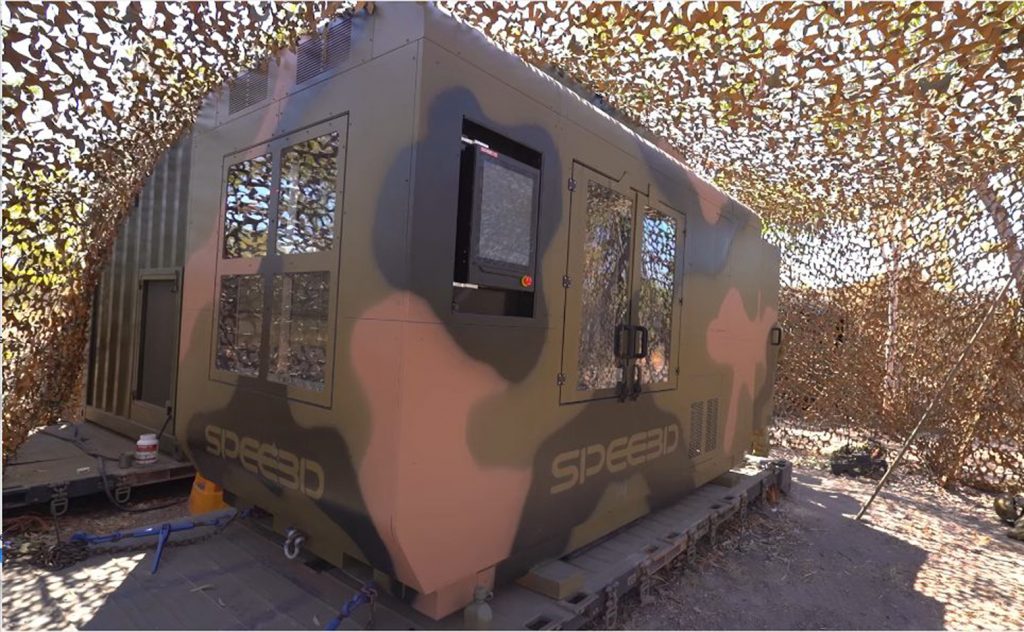
Additive Manufacturing, of course, is no new thing. It’s something the readers of this magazine live and breathe – or at the very least, are frequently exposed to. AM has grown significantly in the last ten years, with the explosion of desktop polymer Fused Filament Fabrication (FFF) machines catering to the maker movement, all the way up to the most advanced and cutting-edge technologies for researchers and application engineers alike. Metal AM, in particular, has seen some of the most incredible innovations in the last decade. Technology developers are pioneering entirely new metal Additive Manufacturing methods, resulting in the emergence of a new wave of metal AM processes that are increasingly more affordable, from the initial cost of the machine, to the total cost of ownership and maintenance.
For example, SPEE3D’s technology has managed to pull metal AM out of the bomb-proof room and into the field (Fig. 1). Leveraging the Cold Spray process for the twenty-first century, the company eliminates the need for the extreme safety measures required to operate Laser Beam Powder Bed Fusion (PBF-LB) machines. This enables machines to be deployed literally anywhere – in fact, the Australian army has used its technology to manufacture replacement parts for mission-critical hardware in the field. This is just one application, of course, but there are plenty of spaces that can benefit from on-site part replacement; ships, oil rigs, and other remote working environments, just to name a few. In addition to the remote application case studies achieved, there’s also a more obvious benefit if you’re looking to add metal AM to your repertoire of tools: you no longer need a made-for-purpose AM room. Instead, you can now include metal AM alongside your other digital fabrication tools.
Research leads tech, but not manufacturing
There’s little undocumented these days about the advancements in Additive Manufacturing, whether they are emerging hardware technologies, optimisation opportunities via improved software, or radical experiments in additive – we’re seeing advancements nearly every day that forecast a bright future for the industry. Research in Additive Manufacturing is in a fascinating state right now, with as much work being done in academic institutions as in private industry, but, frequently, there seems to be a missing common thread when it comes to announcements: how one might apply these bright new technologies.
The adoption of any new technology in manufacturing is slow. Designers and engineers alike are generally sceptical of unproven tech, whether in hardware or software, and the embrace generally happens once clear and identified applications are presented. That scepticism is warranted; the risk of adopting new technologies can be too much if your profit margins are thin and you simply cannot take a chance on your process being halted. That’s why new technologies need to prove themselves with solutions that aren’t just effective, but reliable, before we can expect them to be truly trusted in the manufacturing workflow.
What we’re seeing right now is not without precedent. Research, in the traditional sense, is not driven by application, but by the desire to find new knowledge. There is an abundance of that in additive, but it leaves a chasm to be crossed for use in industry; how do we go from abstract technical solutions to recognised and expected applications for new technology? And why adopt new technologies to begin with if we already have a proven workflow?
The answer is obvious, but it can also be difficult to identify, especially when one is laser-focused on delivering products: With markets constantly shifting, it’s necessary to adopt new technology into manufacturing to remain relevant and competitive. It’s no coincidence that there’s a correlation between the proclivity for startups to take risks on new tech, and their ability to disrupt the status quo.
The disconnect between research and application has always existed, because research lives in static – it’s focused so much on the how that the what is rarely considered. This leaves the industry in the position that, while huge advancements continue to be made in Additive Manufacturing technology, the engineers and designers who might leverage that technology may be unable to see how they could apply it in their practice.
The relationship between manufacturing and AM
The uptake of AM in the manufacturing space has been both stratospherically high and confusingly low. In my experience, there’s no design studio out there without at least a polymer AM machine present for prototyping, nor is there an engineering practice without AM machines installed to test new innovations – but the line between those two spaces has remained solid for most companies. While Additive Manufacturing technologies continue to advance rapidly, we’re learning rather slowly and steadily how to best use it for production.
It’s interesting to observe that, while we’ve seen many incredible innovations in AM tech, applications haven’t really seen widespread adoption in products outside of niche applications. The technology has found firm footing in prototyping, enabling designers and engineers to expedite their design processes in an iterative process, reducing the lead times on receiving physical models as part of the design cycle. While integration in this field is hugely valuable, it does not exactly represent a revolution in how we design and make.
In fact, for the last ten years, the majority of stories we’ve seen around the use of Additive Manufacturing in design or engineering have been focused on geometry or mechanics. There’s no denying that the popularisation of AM technology has influenced how we design products, shifting the design language to embrace more complex or nonstandard forms that AM enables, but this is where our application of AM seems to be stagnating.
To some extent, this is to be expected – take, for example, television. When TV broadcasting first debuted, producers were both unfamiliar and untrained in leveraging this new medium, so applied what they knew from radio. As a result, those early days of broadcasts consisted of talking heads reading the news, or the televising of dramatic performances from a live stage. As time went on, we came to understand what this new medium enabled, both in the programmes we could produce and the interesting results that intelligent (or experimental) use of the camera could achieve. Additive Manufacturing is going through a similar adolescence; the primary focus revolves around the notion that ‘I can make anything’, but the scope of this is limited to geometry and mechanics.
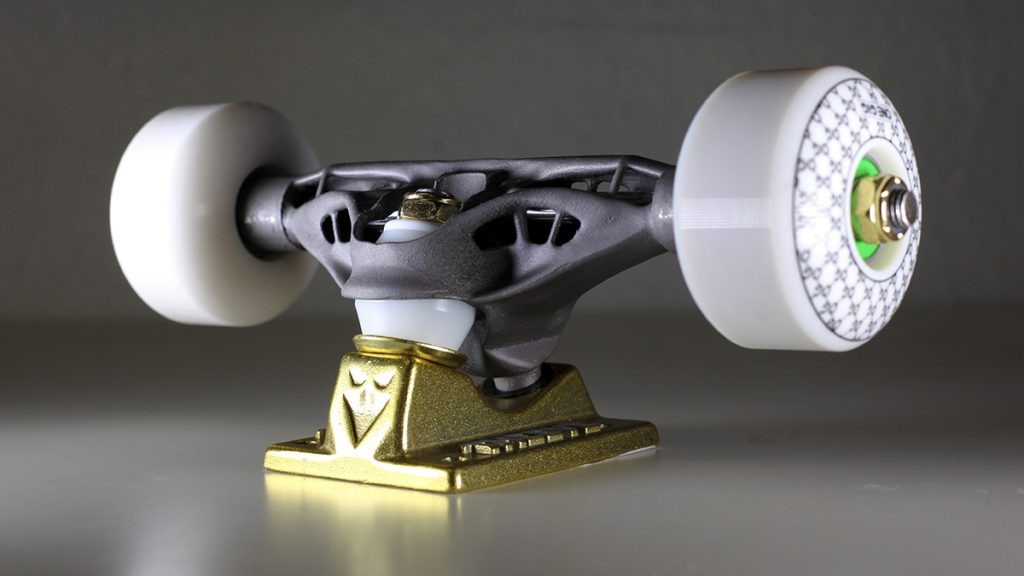
Geometry as a principle, however, needs to be separated from mechanical properties. The forms we can produce with AM enable nearly any shape we can imagine – and even some forms we don’t imagine, but which the computer can propose to us as a starting point via technologies like generative design (Figs. 2-3). Additive opens entirely new worlds of material property manipulation previously thought impossible. When we can forge materials into any shape, of course mechanical properties will be the first port of call (if you’re a mechanical engineer). But what about thermal and aerodynamic properties? Even this, though, is still just the surface. It’s when we combine the multiple potentials of AM with a new, more holistic view of our design problems that we can truly embrace AM’s capabilities in a more advanced manner.
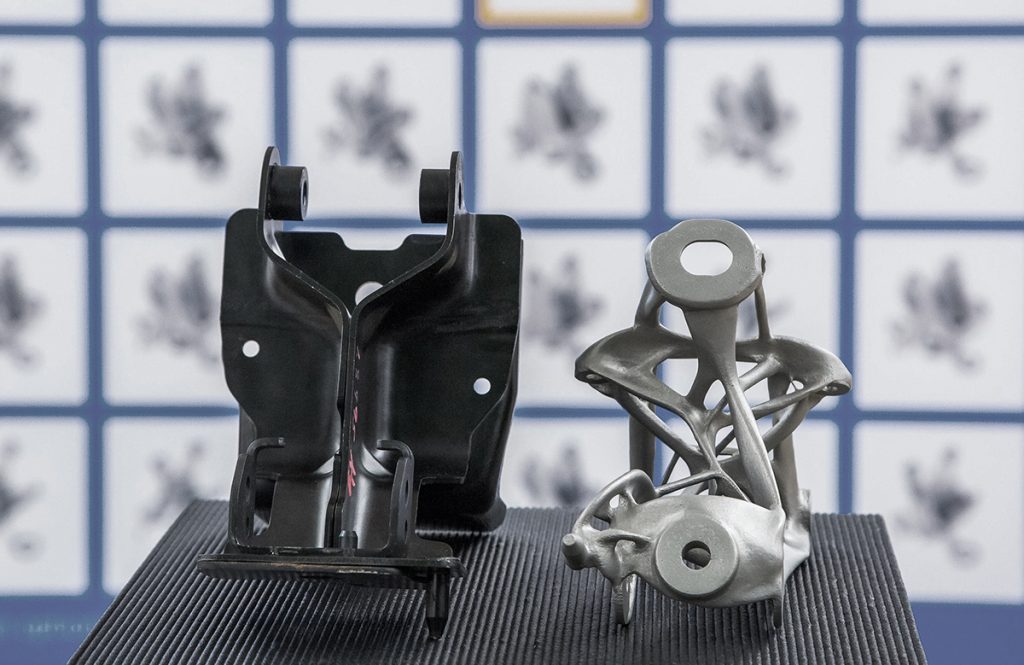
The challenge of maximising the benefits of Additive Manufacturing is two-fold: We need to increase the scope of possibility to look abstractly at material science (as opposed to just material properties), while also considering the entire assembly or system of parts the AM element may be introduced into. Imagine you are designing a high-performance vehicle, where efficiency dictates virtually all the decision making. You need to make your vehicle as light as possible, as aerodynamic as possible, and as power-efficient as possible to shave those precious fractions of a second off your lap time.
With that in mind, the obvious application for AM is reducing weight (lightweighting) while maintaining the relative strength of parts – but there are also cooling and slipstreaming optimisations to achieve. Suddenly, we are compelled to consider using AM across the entire vehicle when making decisions about how, or whether, to apply AM. From a mechanical perspective, the chassis is an obvious contender in a vehicle, where we can use AM to dramatically reduce weight, while maintaining stiffness so that the vehicle performs as intended.
With aerodynamics, there’s a whole world of complex panelling forms that can be applied to the vehicle body to manipulate how air flows over the vehicle. What if the same structure that enables sharks to move so quickly through water was to be applied to parts of the vehicle? AM enables, for example, the creation of granular vortexes that generate the necessary forces to keep the vehicle gripping the road while also flowing over the car directionally to improve how the vehicle cuts through the air. From a thermodynamic position, AM makes it significantly easier to create complex, highly efficient heat exchange forms that ensure everything on the vehicle operates at nominal temperatures, drawing heat away from critical components.
Each of these static examples is valuable individually, but it is when all of these pieces come together that we can truly harness Additive Manufacturing in a manner that leverages the potential of the technology, demonstrating the true capabilities of digital manufacturing and smart manufacturing. Think about the exhaust system of an internal combustion-powered car. Here is a system that must perform well in harsh environments, tolerate a range of ambient temperatures while dealing with the high heat it creates, and, in performance vehicles, must be as light as possible. Considering the above independent factors, and the additional element of systems thinking, it’s possible to merge all the static concepts together to make something literally greater than the sum of its parts.
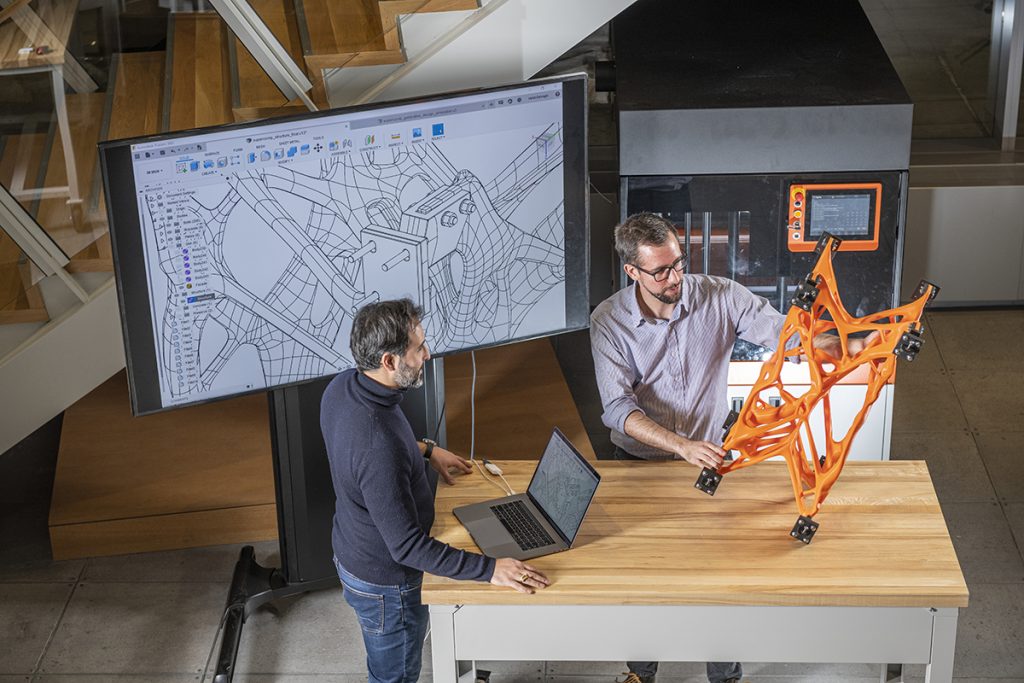
By leveraging the capabilities of Additive Manufacturing, an exhaust system could theoretically have a single component in its assembly that is so thermodynamically efficient that the rest of the components in the system could be replaced with extremely light, less temperature-sensitive parts. If a single element of the exhaust system can cool the exhaust fumes enough, there’s no need to use metals in the rest of the exhaust system. This could enable a switch to cheaper materials that offset the cost of the metal AM part while also decreasing weight. But that’s just one piece of the puzzle.
The outer casing of this hybrid exhaust/heat exchange part is the part most likely exposed to the elements, and, with splitters being commonplace on performance vehicles, any additional element further controlling how air passes under the vehicle would add value. That’s where our aerodynamic considerations can play a part in the design of this single part. Lastly, the most familiar application of AM – the mechanical advantages – can also be considered within the geometry of the heat exchanger, improving stiffness by making it a structural part of the vehicle (as motorcycle engines often do).
Grand ideas need grand tools
You may be thinking that this all sounds very exciting, but that the amount of time and research it would take to produce such a thing are completely outside the scope of possibility for all but the most elite manufacturers. But this is not the case. Three years ago, Autodesk announced the launch of generative design in Fusion 360, a radical paradigm shift for designers and engineers that enables the creation of ready-to-manufacture solutions to mechanical problems in a matter of minutes.
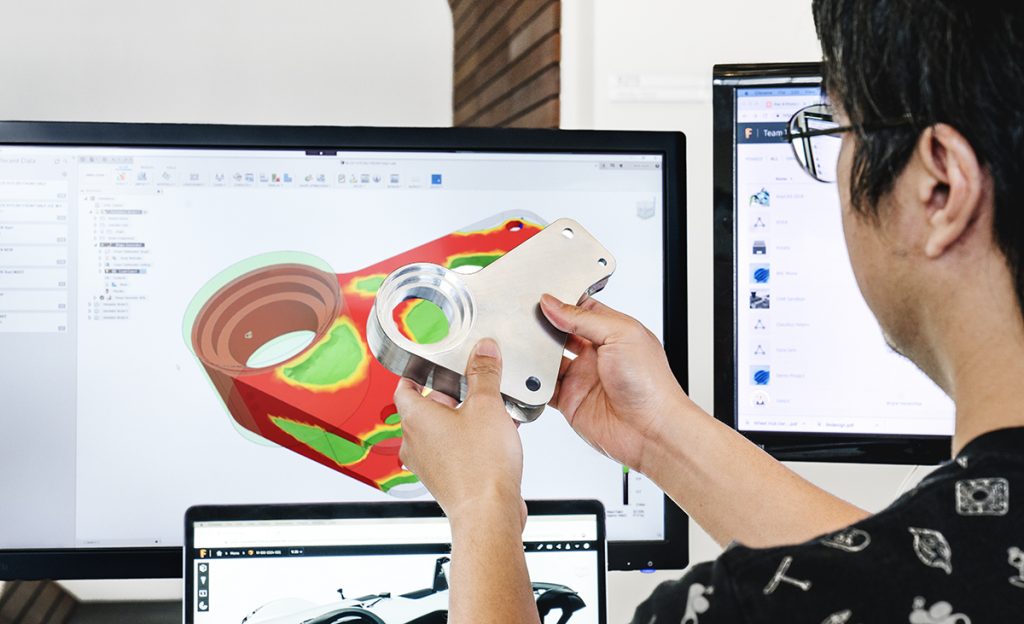
One of the greatest challenges to design is the market itself. Being first to market with new products is more critical than ever, but human time remains very much the bottleneck in the process. Realistically, even the most resourceful of companies can only explore a small handful of concepts before needing to make an informed decision about which strategy to commit to, lest they be left behind in the market. One of the greatest pressures to this is designing for manufacturing (DFM). Our current relationship with design tends to follow a pattern of understanding what the functional and aesthetic goals are, then iteratively inching toward them. Generative design flips the script, enabling engineers and designers alike to take all the known mechanical requirements a part must meet and make them the starting point of a design cycle, instead of a goal to be iteratively reached. By placing mechanical requirements up front, generative design helps produce geometries that meet needs in a matter of minutes, giving designers and engineers a clear geometric representation of how to solve their mechanical problems.
Generative design factors in more than just the mechanical requirements. Designers and engineers may also define the desired manufacturing methodology, whether that’s additive, subtractive, or casting. Alternatively, you can explore all of these manufacturing options at once, in order to get a sense of the geometries the mechanical requirements will require, but limited to ready-to-manufacture designs that you can quickly move to the factory floor. What this means is that generative design can factor in not just the engineering requirements, but the intended manufacturing methodologies as well, and present optimised geometries for each specific manufacturing method. If you’re additively manufacturing, for example, minimum element thickness and overhang angles will be a key consideration. With generative design, you can apply your specific AM criteria to the study, along with your mechanical requirements, ensuring you have not only something that is highly optimised, but ready for manufacturing straight out of the gate.
This isn’t theoretical. Companies all over the world are already taking advantage of generative design, hugely reducing their lead times to manufacturing. General Motors has introduced generative design into its workflows, alongside Additive Manufacturing, to combine part consolidation with lightweighting to help make its fleet of vehicles more fuel efficient. Volkswagen explored generative design for every aspect of its vehicle with the Type 20 Campervan concept (Fig. 6). Tarform Motorcycles uses generative design in the chassis of its bike to maximise stiffness and reduce weight. All these examples have resulted in significant reduction in design lead times, because generative design only provides ready-to-manufacture designs that are already validated against the mechanical specifications provided by the operator.
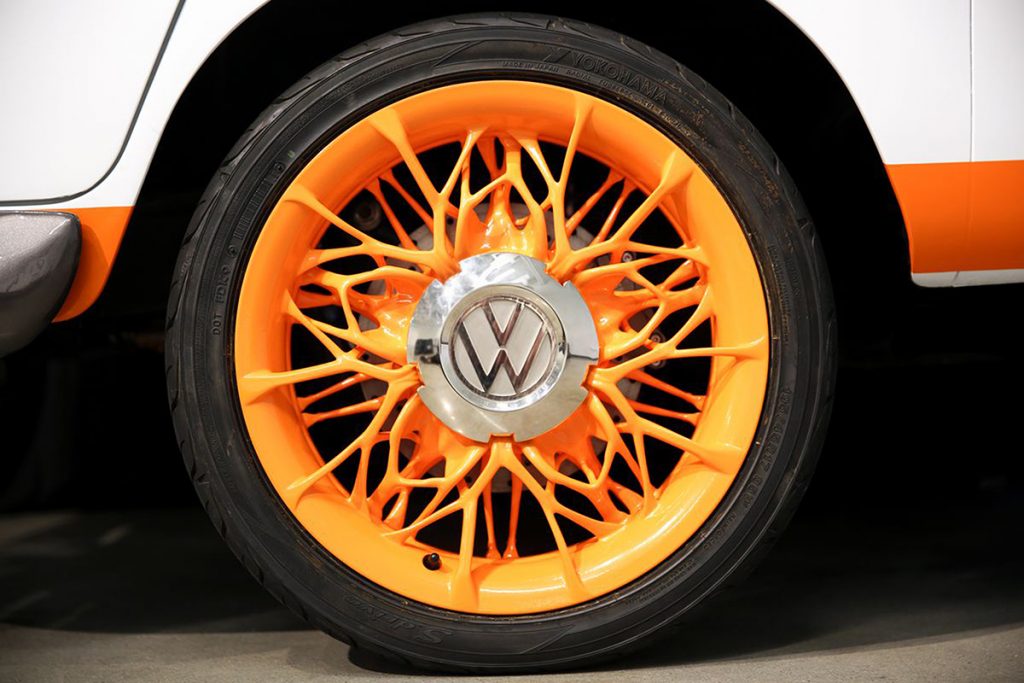
Closing the loop from design to manufacturing
So far, we’ve discussed the challenges facing modern designers and engineers in their relationship with Additive Manufacturing, systems thinking with AM technologies, and generative design as a tool to expedite engineering problems. There remain two portions of the loop not yet addressed: design and manufacturing. As Autodesk’s Peter Rogers explained, “We constantly strive to provide the best possible solutions for manufacturing. We’ve been invested in the industry for several decades, working in step with every level of manufacturing. We aim to assist everyone, from the engineer on the shop floor designing and building in CAD, through to the leaders making decisions and managing projects. We strongly believe that Autodesk best serves industries by working with them closely, intimately understanding the challenges they face, and investing in the research that looks to the future of manufacturing. Our intent is to give our users the competitive edge of not only reaching market first, but also making products more intelligently, more pragmatically, and with considerations to their impact on the planet.”
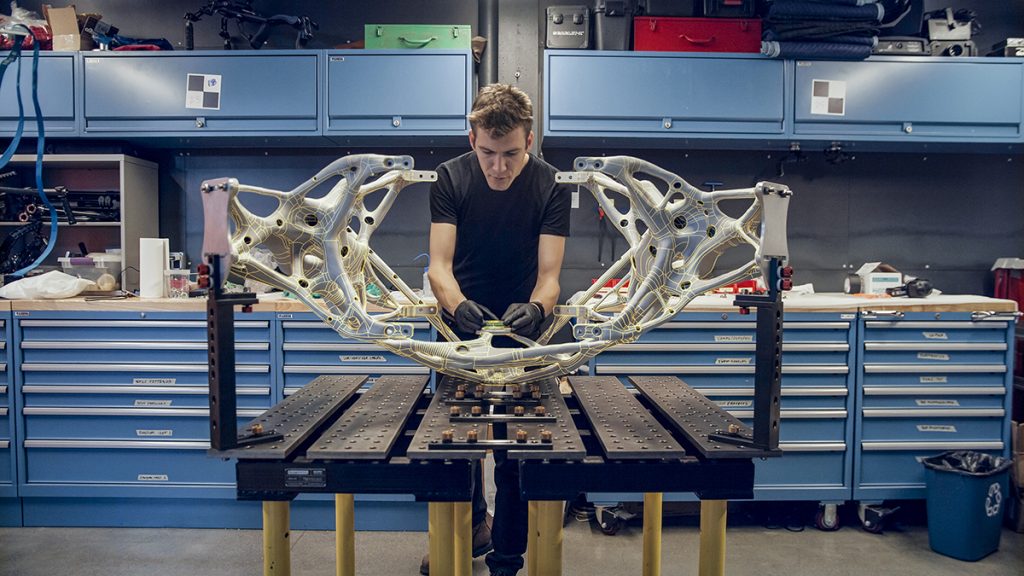
With tools like Fusion 360, our intent is to unite the many roles that collaborate on manufacturing problems in a common set of tools that enable all team members to work in a shared environment, with a shared dataset. As part of that, we’re investing heavily in metal AM capabilities for Fusion 360 through our Additive Extension. We’re bringing PBF-LB capabilities into the tool and plan extensive features that support metal AM coming through 2021 and beyond.
We also understand that, sometimes, the best solutions already exist in the field, and it’s beneficial to all involved to bring that expertise into our solutions and family of products; in 2015, Autodesk acquired Netfabb with exactly that in mind. We take pride in our capabilities and our legacy, but also recognise there are leaders in advanced manufacturing in the marketplace, and sometimes it makes more sense to fold expertise in rather than building up from the ground. Netfabb now offers a world-class experience in metal AM for all levels of users, including the ability to pack parts for PBF-LB, label parts in-product before manufacturing, and the ever-popular ability to cut parts intelligently to fit into a build volume.
Looking to the future
The future is looking very bright for Additive Manufacturing. With an increasing shift into applications and out of the research lab, everyone at Autodesk is expecting a new age of advanced products making their ways into the hands of consumers worldwide. We’re here to work with you every step of the way, providing tools for the challenges you face today as well as bleeding-edge technology that we see as the future of manufacturing.
Author
Paul Sohi
Product Marketing Manager
Autodesk
San Rafael, CA, USA







